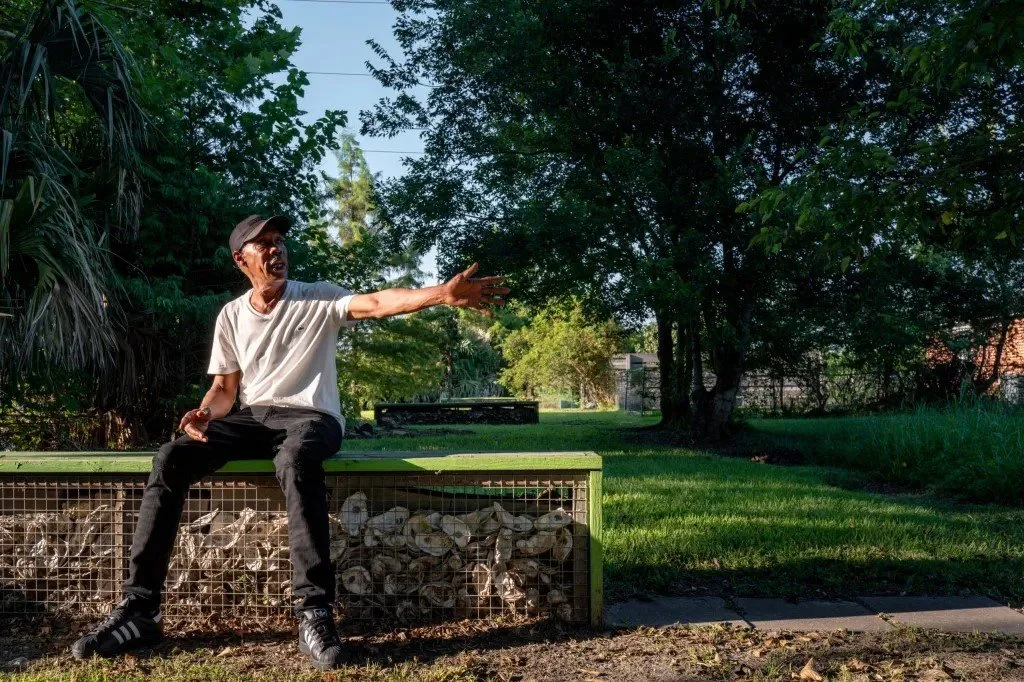Katrina at 20: Race, Wealth, and Recovery
NEW ORLEANS, LOUISIANA - AUGUST 25: Alexander Smith recounts his experience of Hurricane Katrina in the Lower Ninth Ward on August 25, 2025 in New Orleans, Louisiana. New Orleans and the Gulf Coast region are preparing to mark the 20 year anniversary of Hurricane Katrina, which occurred on August 29, 2005. (Photo by Brandon Bell/Getty Images)
Black residents in New Orleans were severely impacted by Hurricane Katrina. 20 years on, here’s what the data shows.
By Anissa Durham
“Katrina: 20 Years Later” is Word In Black’s series on Hurricane Katrina’s enduring impact on New Orleans, and how Black folks from the Big Easy navigate recovery, resilience, and justice.
August 29, 2025, marks 20 years since Hurricane Katrina tore through the northern Gulf Coast as a Category 3 storm. It killed nearly 1,400 people, displaced more than a million across Alabama, Louisiana, and Mississippi, and caused more than $200 billion in damages — making it the costliest natural disaster in United States history.
Nowhere was the devastation more visible than in New Orleans. When the levees broke in the city, so too did the illusion that race and class no longer determined who survives and who rebuilds. In 2000, a few years before Katrina, New Orleans had the highest rate of Black poverty of any major city in the nation, at 35%. Majority-Black neighborhoods like the Lower Ninth Ward vanished underwater, and many of those families never returned.
RELATED: A Smaller, Whiter, Less Affordable New Orleans
Two decades after the storm, data reveals how Katrina reshaped the city — a city remade, but not yet healed. New Orleans now has fewer Black residents, a wider racial wealth gap, and — at last — broader access to health care.
1. A City With Fewer Black Residents
New Orleans rebuilt much of what was lost, but the city isn’t the same. Before Katrina, New Orleans was about 67% Black. Today, that number is closer to 57%. The result is a reshaped city: whiter, wealthier, and more gentrified.
In 2000, U.S. Census Bureau data showed that before Katrina, there were about 325,000 Black residents in the Big Easy — making up one-third of the population. After the storm, however, thousands of residents were displaced. Some left and later returned, while others never came back. As a result, in 2024, census data showed the Black population in the city decreased to roughly 204,000 — a loss of more than 120,000 people.
In comparison, the city saw a much smaller loss of white residents — going from approximately 136,000 white residents in 2000 to 113,000 in 2024, a loss of around 23,000 people.
2. The Racial Wealth Gap in New Orleans
In the U.S., white households typically have about six times and five times the wealth of Black and Hispanic households, respectively. There are a number of factors contributing to this wealth divide, but it can largely be attributed to systemic racism — by way of redlining, the criminal justice system, and the long-term impacts of slavery.
In New Orleans, the racial wealth gap between white and Black families is staggering. The median net worth of white households is about $181,000, compared with just $18,000 for Black households. That means the typical white household holds 10 times the wealth of the typical Black household.
That means the typical white household holds 10 times the wealth of the typical Black household. Research shows that post-Katrina, white families and those with greater resources were more likely to be able to navigate insurance payouts, secure loans, and access federal aid. Black renters and low-income homeowners often faced roadblocks or were excluded altogether.
3. More Working Adults Have Health Care Coverage
On the bright side, the share of working-age adults in New Orleans without health insurance has been cut by more than half. In 2013, nearly one in four adults lacked coverage; by 2023, the rate had fallen to 10% — roughly in line with the national average.
In a city where the storm once destroyed its main public hospital and left thousands stranded without care, expanded access to doctors, clinics, and medication represents real progress.

